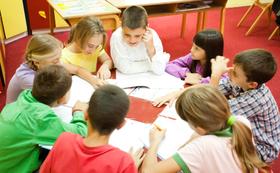Top Rankings
Seaside School District 10 ranks among the top 20% of public school district in Oregon for:
Category
Attribute
Diversity
Most diverse schools (Top 1%)
For the 2025-26 school year, there is 1 public charter school serving 30 students in Seaside School District 10. This district's average charter testing ranking is 4/10, which is in the bottom 50% of public charter schools in Oregon.
Public Charter School in Seaside School District 10 have an average math proficiency score of 20% (versus the Oregon public charter school average of 34%), and reading proficiency score of 50% (versus the 51% statewide average).
Minority enrollment is 27% of the student body (majority Hispanic), which is less than the Oregon public charter school average of 28% (majority Hispanic).
Overview
This School District
This State (OR)
# Schools
4 Schools
133 Schools
# Students
1,457 Students
42,875 Students
# Teachers
99 Teachers
2,179 Teachers
Student-Teacher Ratio
15:1
15:1
Student By Grade
District Rank
Seaside School District 10, which is ranked within the bottom 50% of all 185 school districts in Oregon (based off of combined math and reading proficiency testing data) for the 2022-2023 school year.
The school district's graduation rate of 77% has increased from 70-74% over five school years.
Overall District Rank
#141 out of 187 school districts
(Bottom 50%)
(Bottom 50%)
Math Test Scores (% Proficient)
21%
31%
Reading/Language Arts Test Scores (% Proficient)
35%
44%
Science Test Scores (% Proficient)
24%
30%
Graduation Rate
77%
81%
Students by Ethnicity:
Diversity Score
0.54
0.46
% American Indian
1%
1%
% Asian
2%
2%
% Hispanic
30%
15%
% Black
n/a
2%
% White
61%
72%
% Hawaiian
1%
n/a
% Two or more races
5%
8%
All Ethnic Groups
District Revenue and Spending
The revenue/student of $24,193 is higher than the state median of $18,279. The school district revenue/student has stayed relatively flat over four school years.
The school district's spending/student of $30,511 is higher than the state median of $19,325. The school district spending/student has stayed relatively flat over four school years.
Total Revenue
$35 MM
$9,902 MM
Spending
$45 MM
$10,468 MM
Revenue / Student
$24,193
$18,279
Spending / Student
$30,511
$19,325
Best Seaside School District 10 Public Charter Schools (2025-26)
School
(Math and Reading Proficiency)
(Math and Reading Proficiency)
Location
Quick Facts
Rank: #11.
The Cannon Beach Academy
Charter School
(Math: ≤20% | Reading: <50%)
Rank:
Rank:
5/
Bottom 50%10
3781 S Hemlock St
Cannon Beach, OR 97110
(503) 436-4463
Cannon Beach, OR 97110
(503) 436-4463
Gr: K-5 | 30 students Student-teacher ratio: 30:1 Minority enrollment: 27%
Recent Articles

School Vouchers: Updated Pros and Cons (2025 Review)
Comprehensive 2025 analysis of school vouchers, weighing benefits and challenges for families, funding, outcomes, and policy directions.

Benefits and Drawbacks of Homework in 2025
Explore updated 2025 insights on homework’s benefits, drawbacks, mental health impact, best practices, and policy trends in U.S. public schools.

Charter Schools vs Public Schools 2025: Key Differences & Trends
Explore updated 2025 insights comparing charter schools vs public schools, enrollment, academic outcomes, funding, and real-world examples for families and educators.





